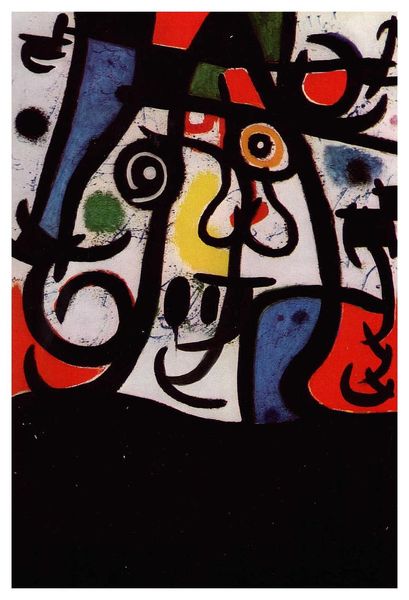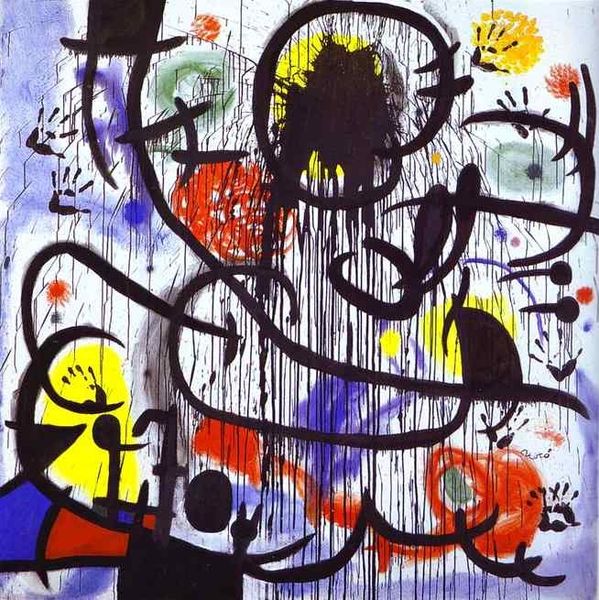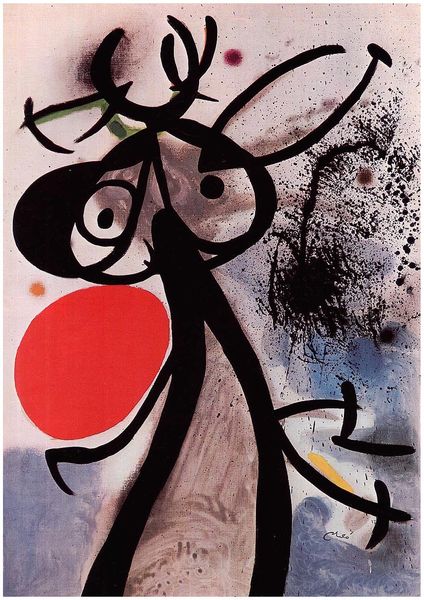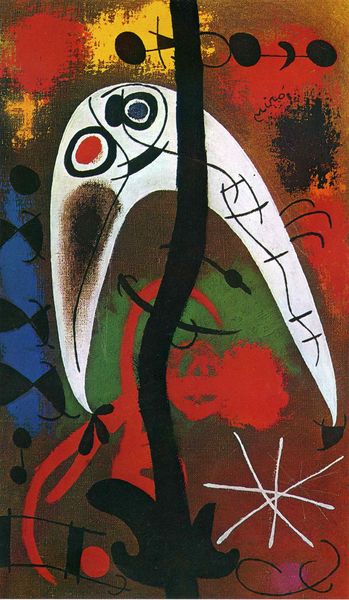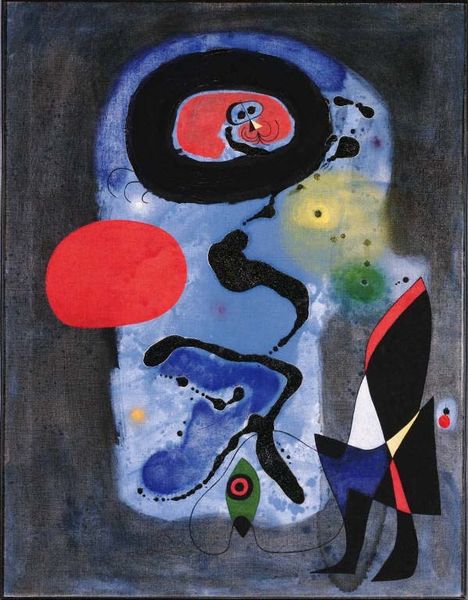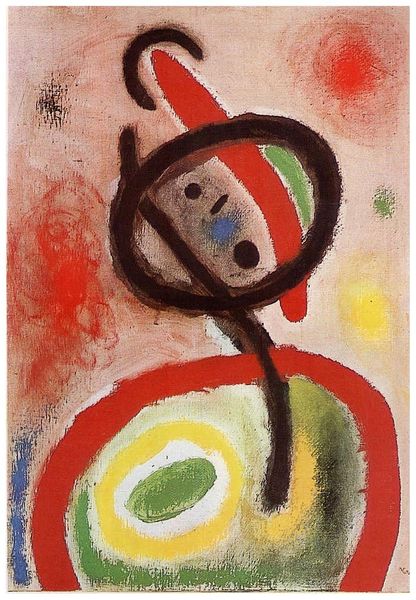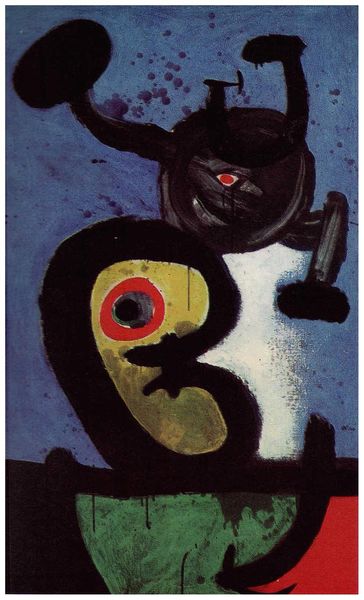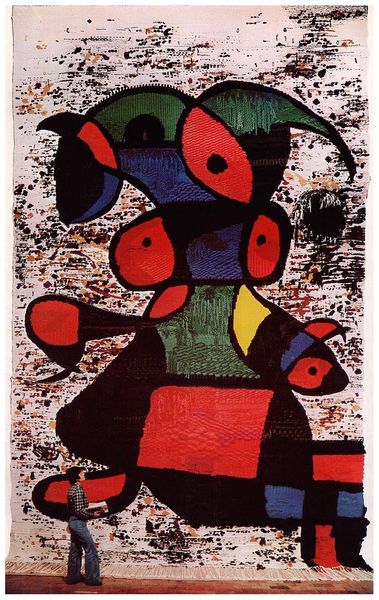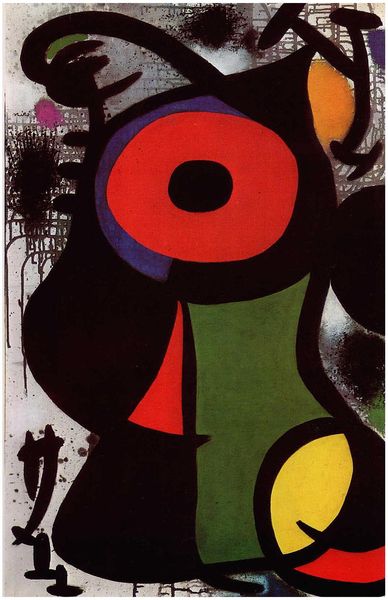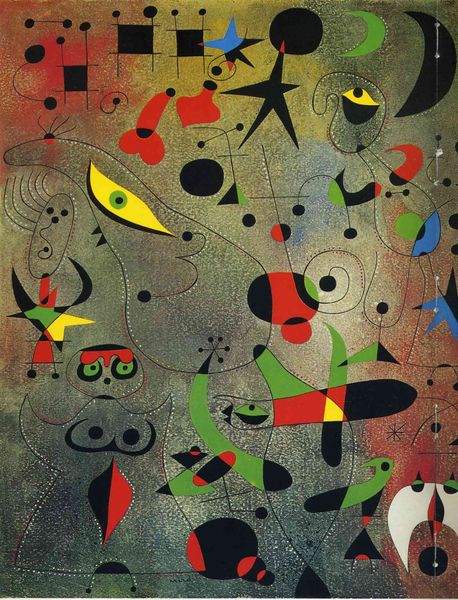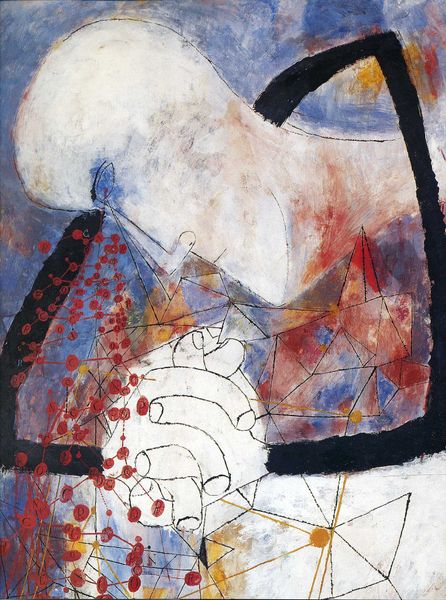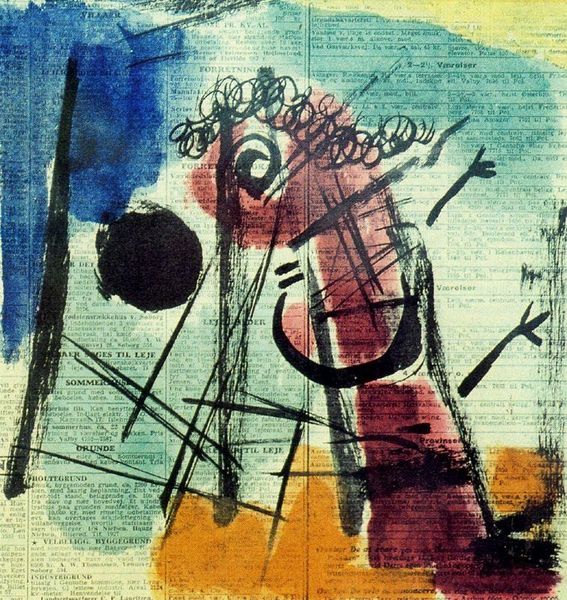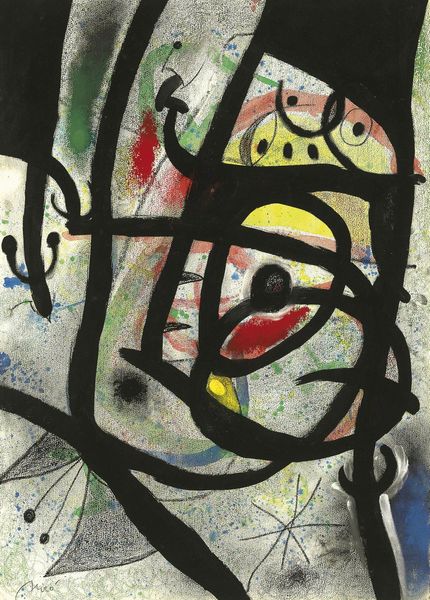
painting, acrylic-paint
#
abstract-expressionism
#
abstract painting
#
painting
#
acrylic-paint
#
form
#
acrylic on canvas
#
abstraction
#
line
#
painting art
#
surrealism
#
modernism
Copyright: Joan Miro,Fair Use
Editor: So, this is Joan Miró’s "Women and Birds in the Night," created in 1968 using acrylic paint. It feels very playful, almost like looking at children's book illustrations. I’m curious about the story behind these biomorphic shapes and contrasting colors. How do you interpret this work? Curator: It’s tempting to see playfulness, but remember Miró produced this work during a time of immense social upheaval globally. The late 60s saw protests, student movements, and challenges to established power. Given this socio-political landscape, how might that influence how we understand what seems like a "playful" work? Editor: I hadn't considered that connection. So, maybe the "playfulness" is a mask for something deeper, perhaps a subconscious reaction to the times? Curator: Exactly. Consider how Abstract Expressionism became popular in America post-WWII, partially because its lack of clear imagery could be interpreted in numerous ways during periods of state censorship. Miró was part of this overall context of shifting approaches to artmaking that emphasized subject expression in a time of societal turmoil. Do you think the title reinforces that duality in his shapes? Editor: I think the title suggests there’s both darkness and wonder coexisting. So maybe those stark contrasts between the colorful backdrop and the stark black figures are symbolizing that tension? Curator: Precisely. Miró wasn't simply creating pretty pictures; he was grappling with anxieties and energies within his world, and expressing them through a visual language informed by the sociopolitical issues of his time, a world also experiencing mass technological changes. Editor: It's fascinating to rethink my initial assumptions about the art’s mood based on historical context! Thanks for widening my view! Curator: Art doesn't exist in a vacuum, does it? Now, what’s your take on what is it trying to make us think or do, now that it’s on view at the museum today?
Comments
No comments
Be the first to comment and join the conversation on the ultimate creative platform.
